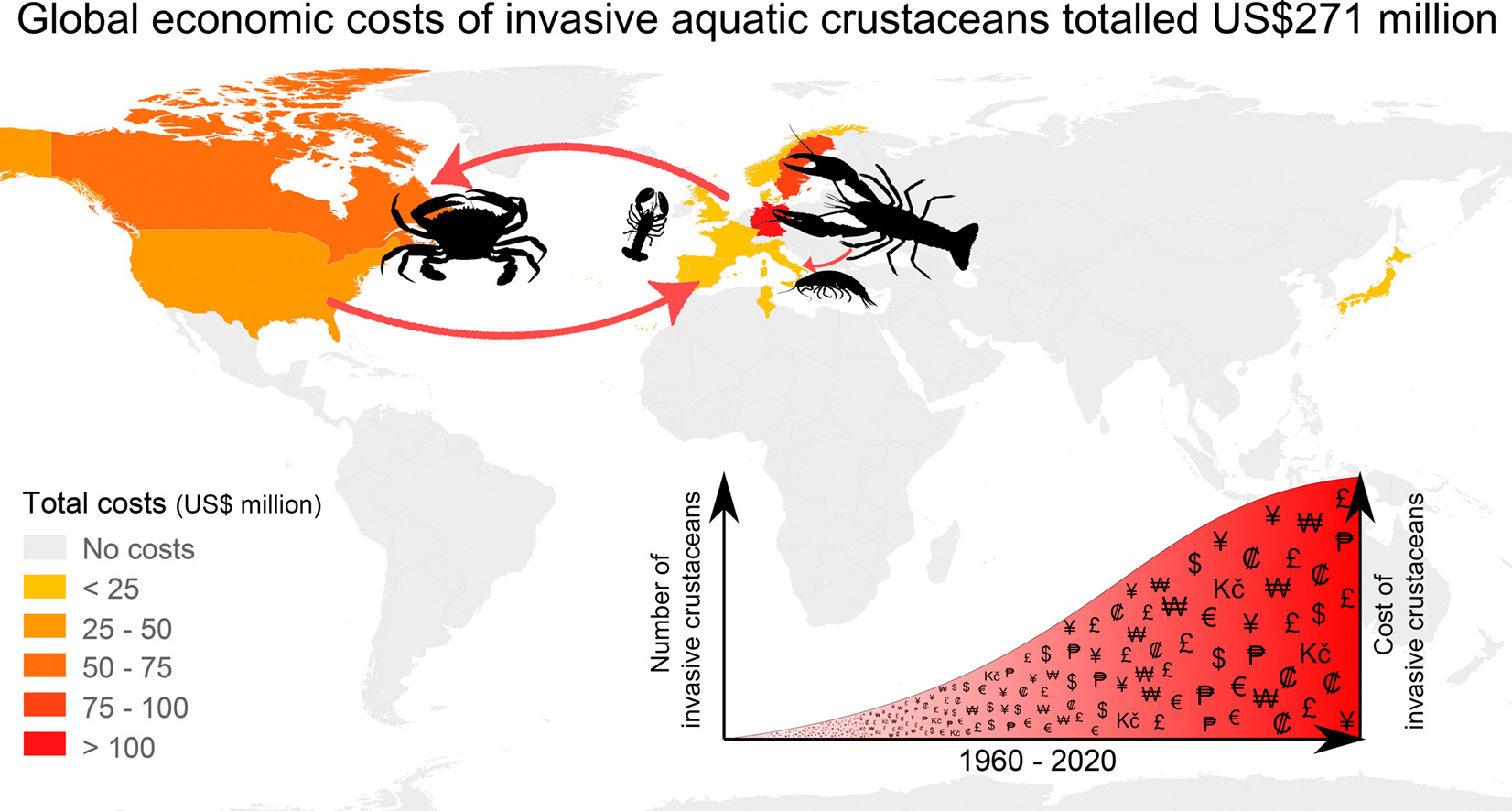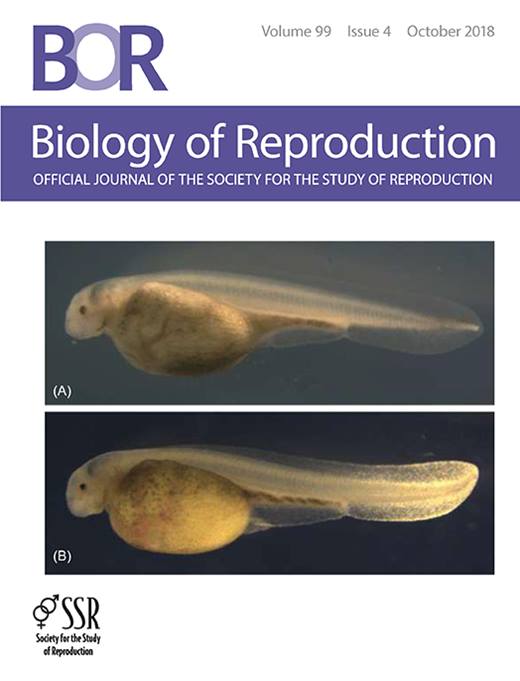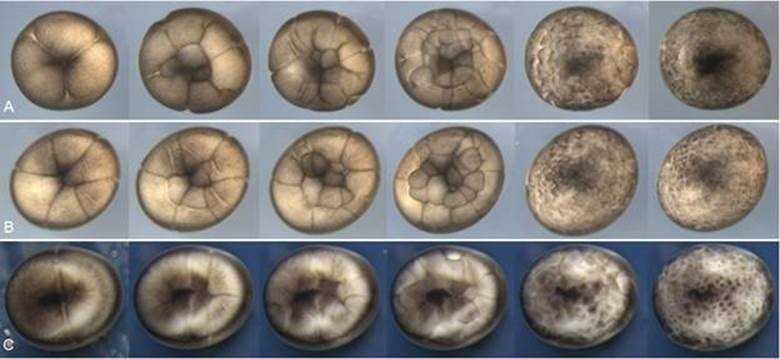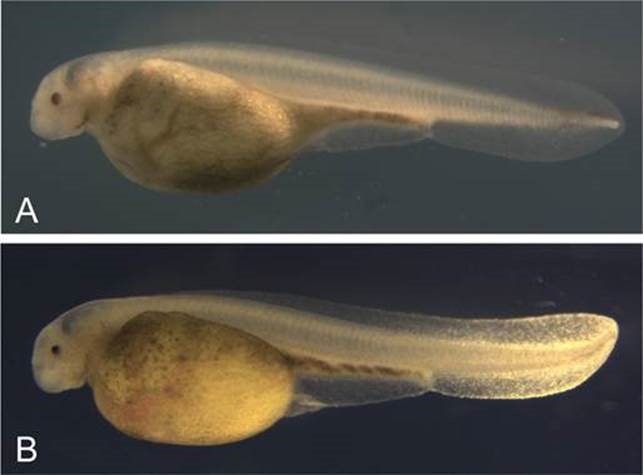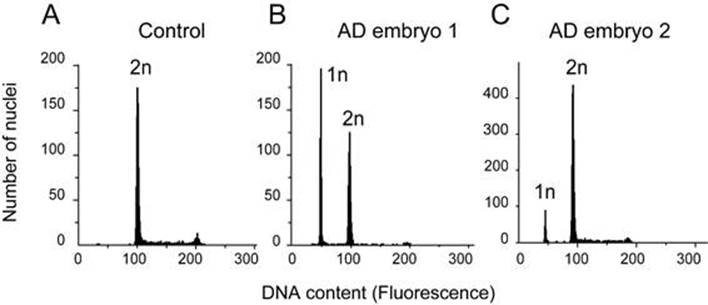- Fotogalerie:
- Foto:
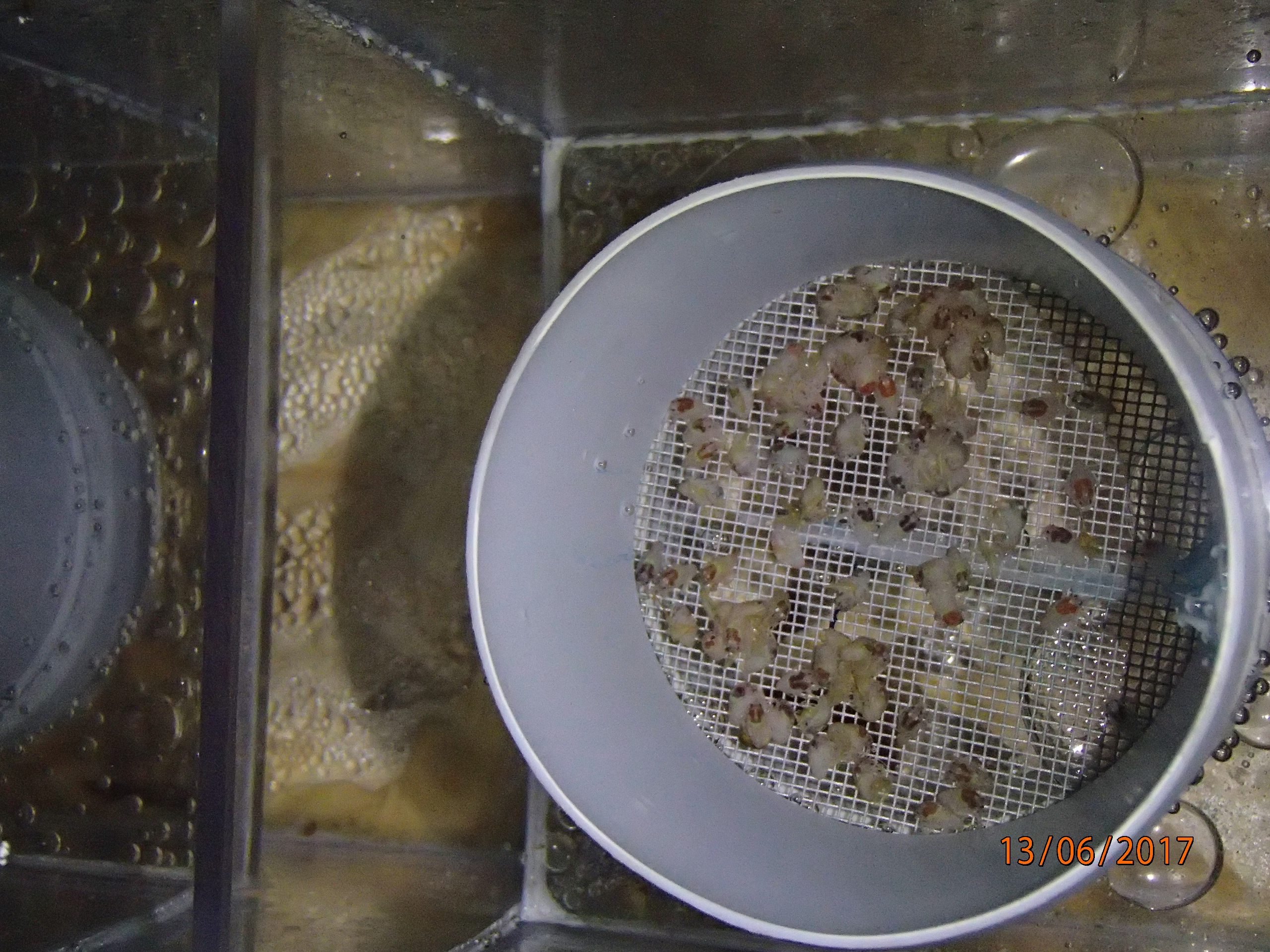
- Foto:
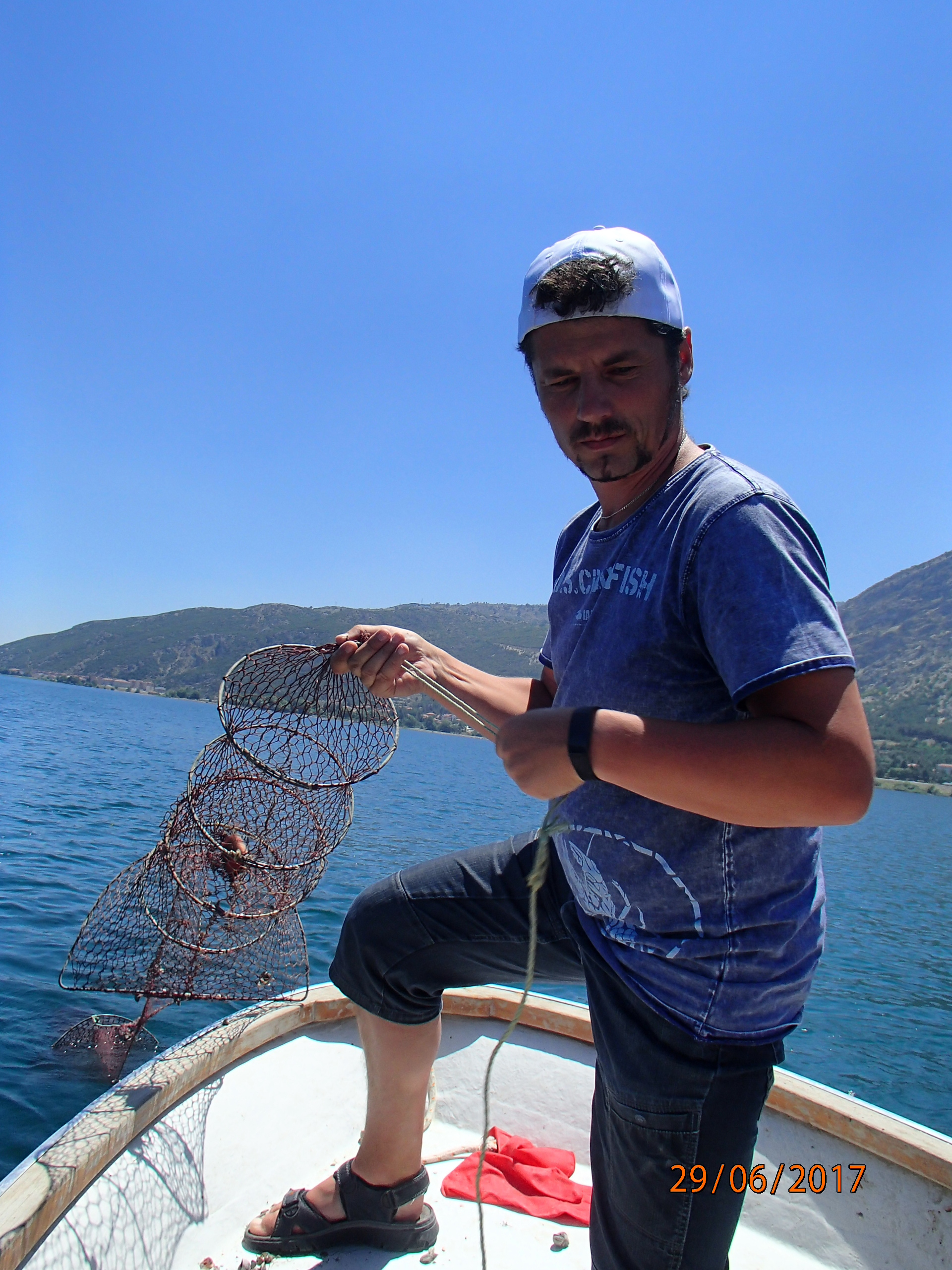
- Foto:
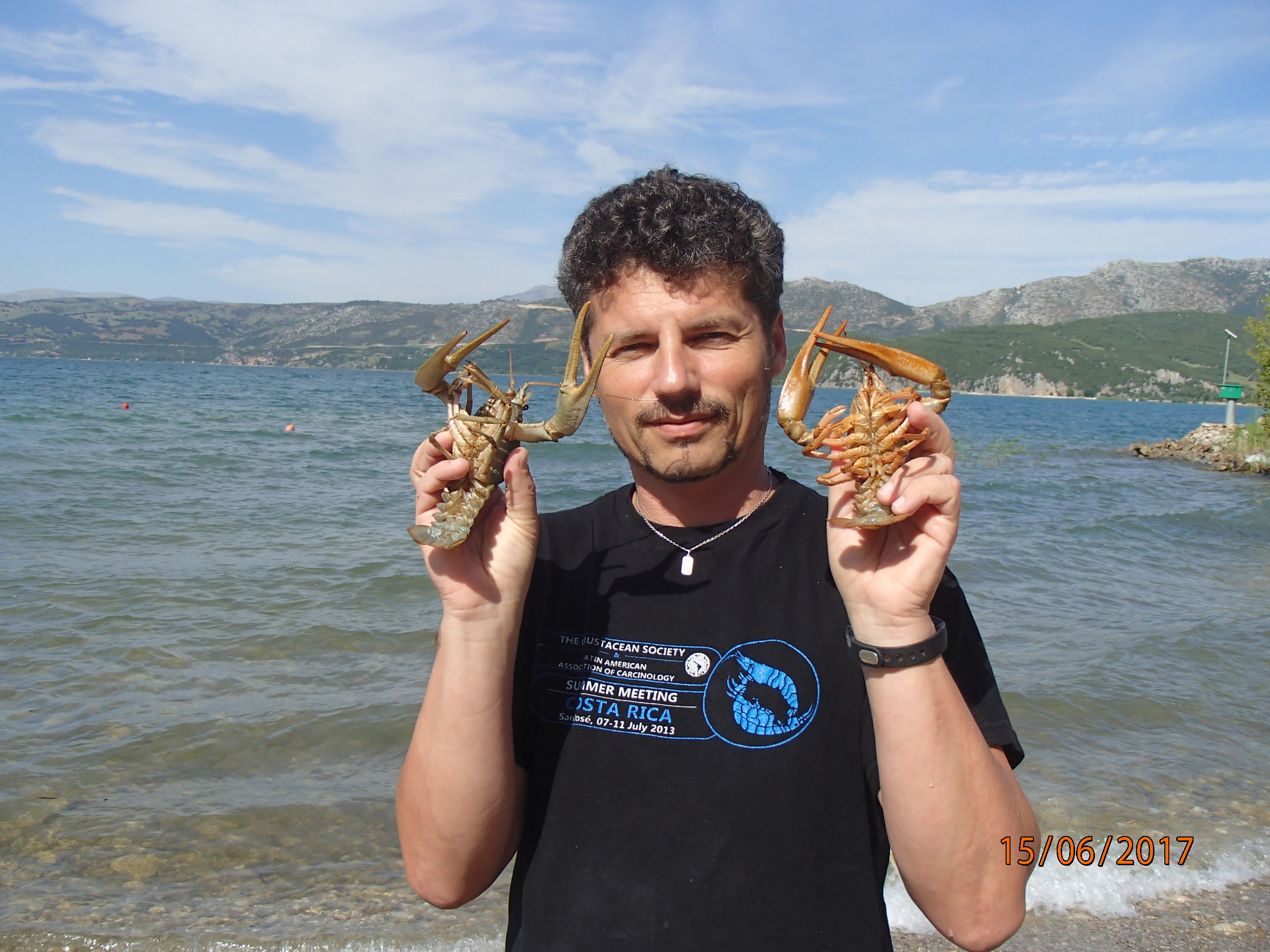
- Foto:
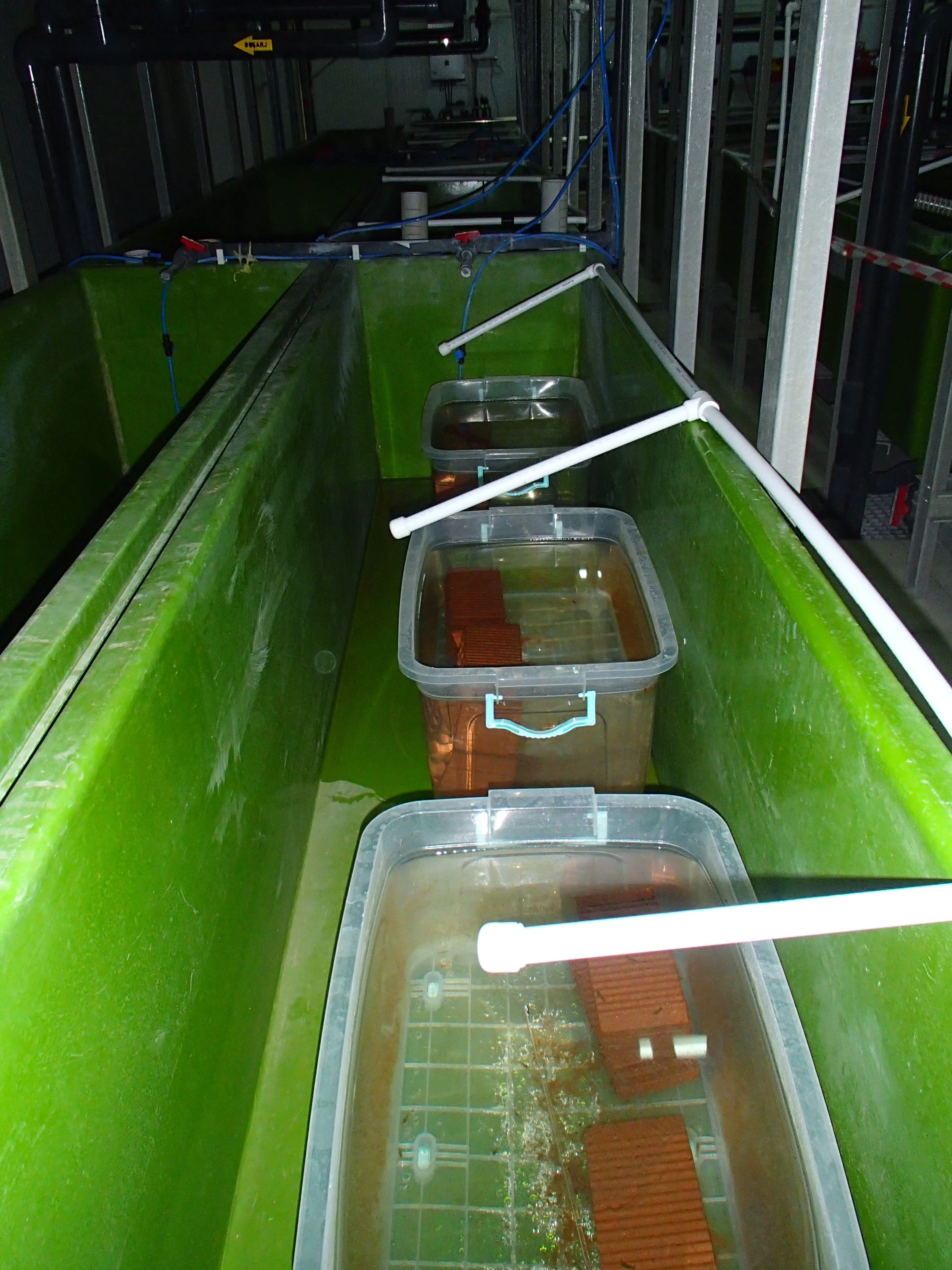
- Foto:
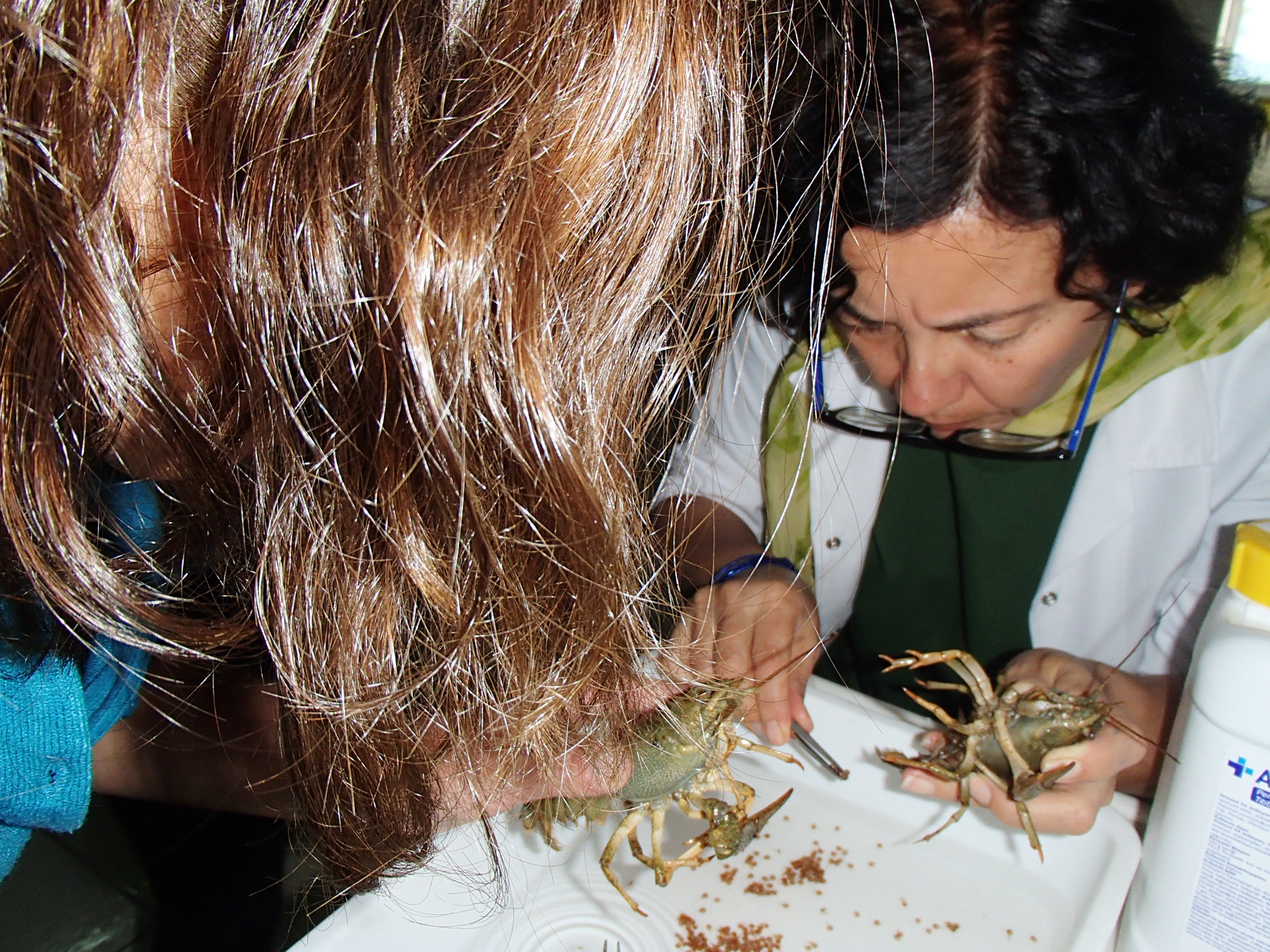
- Foto:
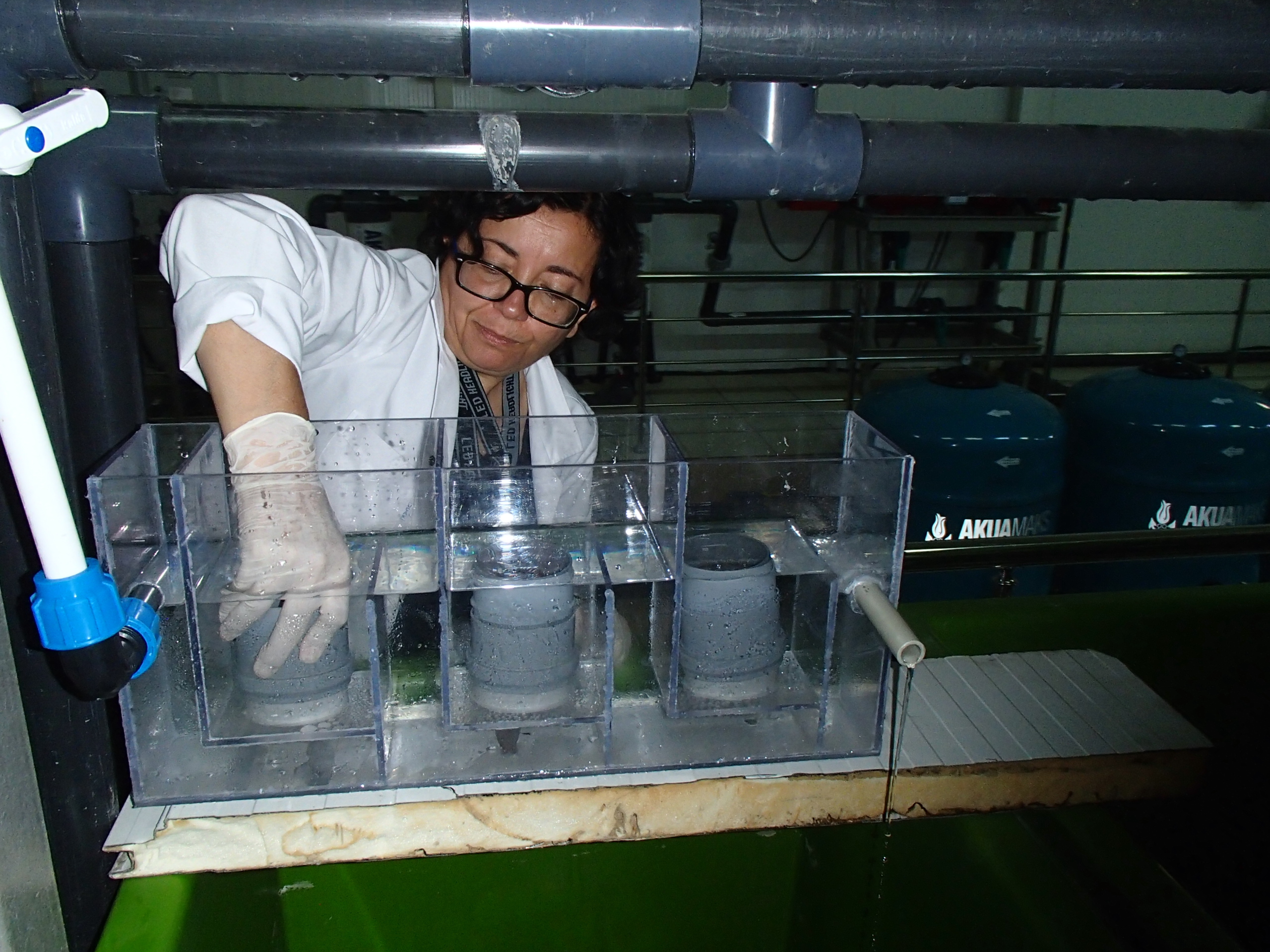
Within the long-term cooperation of the Faculty of Fisheries and Protection of Waters USB with Turkish colleagues in crayfish research and colleagues from Charles University in Prague, we developed a method of artificial incubation of crayfish eggs to reduce the transmission of crayfish plague from infected females to their offspring. In Turkey, the commercial harvesting of crayfish, namely the narrow-clawed crayfish, is a significant part of commercial aquaculture. They are mainly exported and represent an important source of income. These exports grew until the mid-1980s when the accidental introduction of the crayfish plague caused dramatic declines in crayfish populations. Although crayfish densities in some Turkish lakes have recovered to levels where fishing is economically viable, persistent chronic crayfish infections have not allowed full recovery of the local populations. Consequently, considerable financial resources have been invested in developing alternative methods of crayfish farming in closed aquaculture systems.
However, the development of these farms has been hampered by the high mortality rates of both wild-caught broodstocks and juveniles. This is caused by the onset of crayfish plague symptoms. We have focused on solving this problem. We have shown that the artificial incubation of separated eggs from females held in a flow-through system with plague-free water, in a possible combination of egg disinfection in formaldehyde or peracetic acid, reduces the transmission of infection from mothers to their offspring.
The utilization of this method has significant potential in commercial crayfish farms in regions with crayfish plague presence, potentially resulting in the disease transmission- via infected broodstocks or infected water. This is another particular success of the FFPW USB scientists in protecting native crayfish species and mitigating the negative impacts of the spread of non-native crayfish species and crayfish plague.
More detailed information can be found in the original article: Kozák, P., Erol, K.G., Uzunmehemtoglu, O.Y., Tangerman, M., Mojžišová, M., Özkök, R., Kouba, A., Cinar, S., Petrusek, A., 2023. Short-term artificial incubation before hatching limits vertical transmission of Aphanomyces astaci from chronically infected females of a host species susceptible to crayfish plague. Aquaculture 569: 739373. https://doi.org/10.1016/j.aquaculture.2023.739373
Written by: prof. Pavel Kozák
- Fotogalerie:
- Foto:
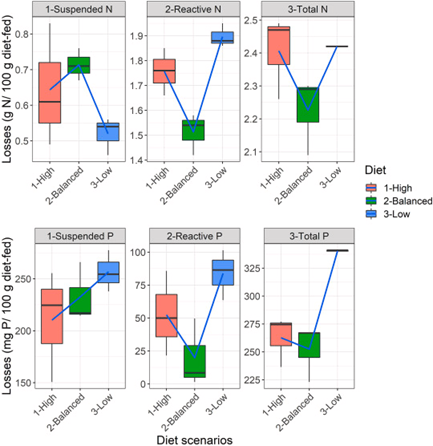
Central European standing water bodies, the main part of it consisting of carp ponds, suffer from strong eutrophication (an excess of available nutrients, especially nitrogen and phosphorus). This eutrophication is often associated with the currently conducted feeding (farming) management in these fishponds, which does not consider the balanced nutritional needs of the growing fish. Our present study provides an understanding of how to fish nutrition shapes nutrient excretion and eventually eutrophication. The study concludes that in spring and autumn, the status quo diets lead to inefficient resource use and indirectly to poor ecological conditions. Improved ecosystem resource use efficiency and tackling eutrophication may be achieved by ‘bio-manipulating’ these fishponds towards a more balanced fish nutrition. The study calls for balanced pond feeds that optimize resource utilization efficiency and stimulates fish to exploit better the natural food – in such a way that ecosystem services are maintained.
The authors feel future researchers could carry the baton forward with a novel understanding this article offers. Especially the ecological management of these important pond ecosystems and cleaner aquatic food production from pondscapes of Central Europe.
A graphical summary of the presented concept. High= beginning of the vegetative season (lacking carbohydrate energy in ponds). Low= end of the vegetative season (lacking some indispensable amino acids in ponds). Balanced= short transition time (beginning-to-mid summer) when zooplankton-zoobenthos is sufficient and cereals are introduced in a pond. Suspended losses= losses through faeces (undigested nutrients). Reactive losses= losses through gills and urine (discarding of digested nutrients). Nutrient loading from fish stock to a pond ecosystem is minimum when the pond diet is balanced.
Detailed information is available in the original article: Roy, K., Vrba, J., Kajgrova, L., Mraz, J., 2022. The concept of balanced fish nutrition in temperate European fishponds to tackle eutrophication. Journal of Cleaner Production 364, 132584. https://doi.org/10.1016/j.jclepro.2022.132584
Written by: Koushik Roy, Ph.D.
Cover photo courtesy: Dipl.-Ing. Tomáš Kolařík
A large amount of fish is spoilt each year from post-catch to consumption. There is a growing interest in applying essential oils (EOs) as bio-preservatives to control the spoilage of chilled-stored fish. However, piles of information on the EOs’ effects on chilled stored fish cannot provide a clear guide toward the appropriate application of EOs to restrain various spoilage microorganisms. In our recent article, we reviewed and meta-analyzed 180 scientific articles working with chilled stored fish to corroborate the promises of EOs in the chilled-stored fish industry.
We identified six EOs with extraordinary total microflora reduction potential for raw fish – citrus, mentha, origanum, thymus, zataria, and Zingiberaceae. Not all EOs can suppress all groups of specific microbes. Only origanum, Zingiberaceae, and thymus have complete-spectrum efficacy. Noticeably, they should be applied by the correct methods, e.g., hurdle technology, active film nanoemulsion, special packaging. We also exposed the concertation effects of EOs on fish odour and flavour. It is showed that the low level of most EOs imparts little interference on the natural odour of fresh fish. Sensory deterioration in EO treated fish flesh is much slower than normal refrigerated ones. Thus, selected EOs at mild concentrations with the right application method can promote chilled-stored fish' safety, sensory and shelf-life agendas.
The study provides clear-cut strategical support to good EO’s application in chilled stored fish based on metadata analysis.
Detailed information can be found in the original paper Hao, R., Roy K., Pan, J., Shah, B.R., Mraz, J. 2021. Critical review on the use of essential oils against spoilage in chilled stored fish: A quantitative meta-analyses. Trends in Food Science & Technology 111: 175–190.
Heatmap of the anti-microbial efficacy of top 6 essential oils with extraordinary total viable count reduction potential against specific spoilage microbes
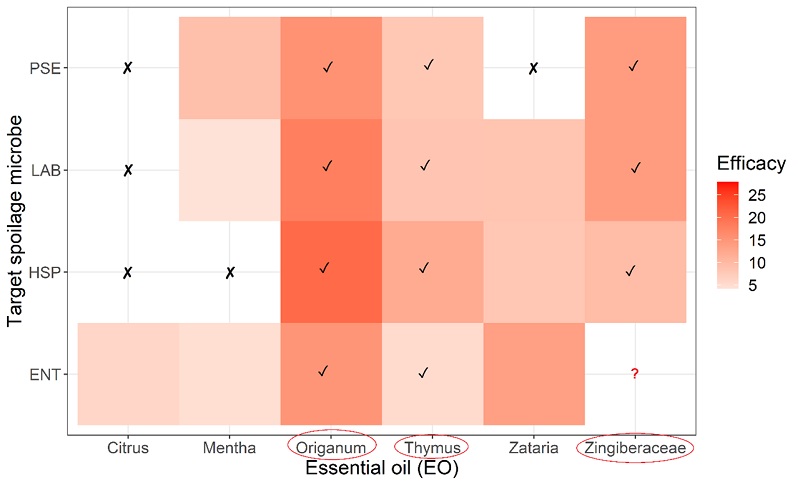
Commonly used application methods of essential oils in chill-stored fish
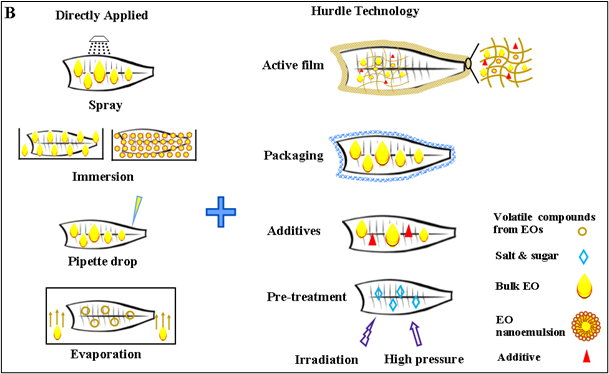
- Fotogalerie:
- Foto:
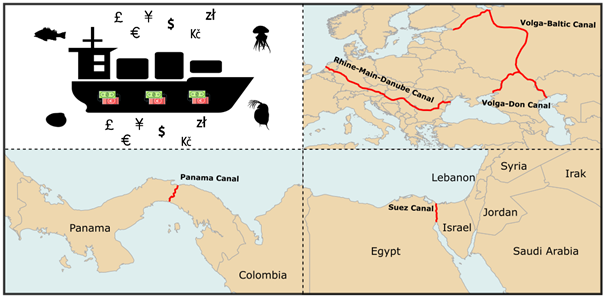
Aquatic invasive species are a major threat to biodiversity, but also the economy. One of the factors facilitating their spread is the construction of canals that connect two previously separated seas. In our paper, we quantified for the first time the economic costs of invasive species facilitated by the three globally most important canals (Suez, Panama, and European Inland Canals) using the most comprehensive database on the economic costs of invasive alien species worldwide (InvaCost).
Despite the high number of invasive species listed to have been facilitated in their introduction and spread by these canals, only for five of them economic costs were reported: the fishhook waterflea Cercopagis pengoi and the zebra mussel Dreissena polymorpha for the European Inland Canals, and the silver-cheeked toadfish Lagocephalus sceleratus, the lionfish Pterois miles, and the nomad jellyfish Rhopilema nomadica for the Suez Canal. However, these species alone accounted for a total cost of $42.2 million ($33.6 for European Inland Canals and $8.6 for Suez, while no costs were reported for the Panama Canal). Considering the high number of ecologically problematic invasive species spreading in these regions, it is obvious that their socioeconomic damage remains almost entirely unknown.
More detailed information can be found in the original article: Balzani, P., Cuthbert, R.N., Briski, E., Galil, B., Castellanos-Galindo, G.A., Kouba, A., Kourantidou, M., Leung, B., Soto, I., Haubrock, P.J., 2022. Knowledge needs in economic costs of invasive species facilitated by canalisation. NeoBiota 78, 207–223. https://doi.org/10.3897/neobiota.78.95050.
Written by: Paride Balzani, Ph.D.
Photo source: EVER_GIVEN_(49643352087).jpg (2934×1640) (wikimedia.org)
- Fotogalerie:
- Foto:
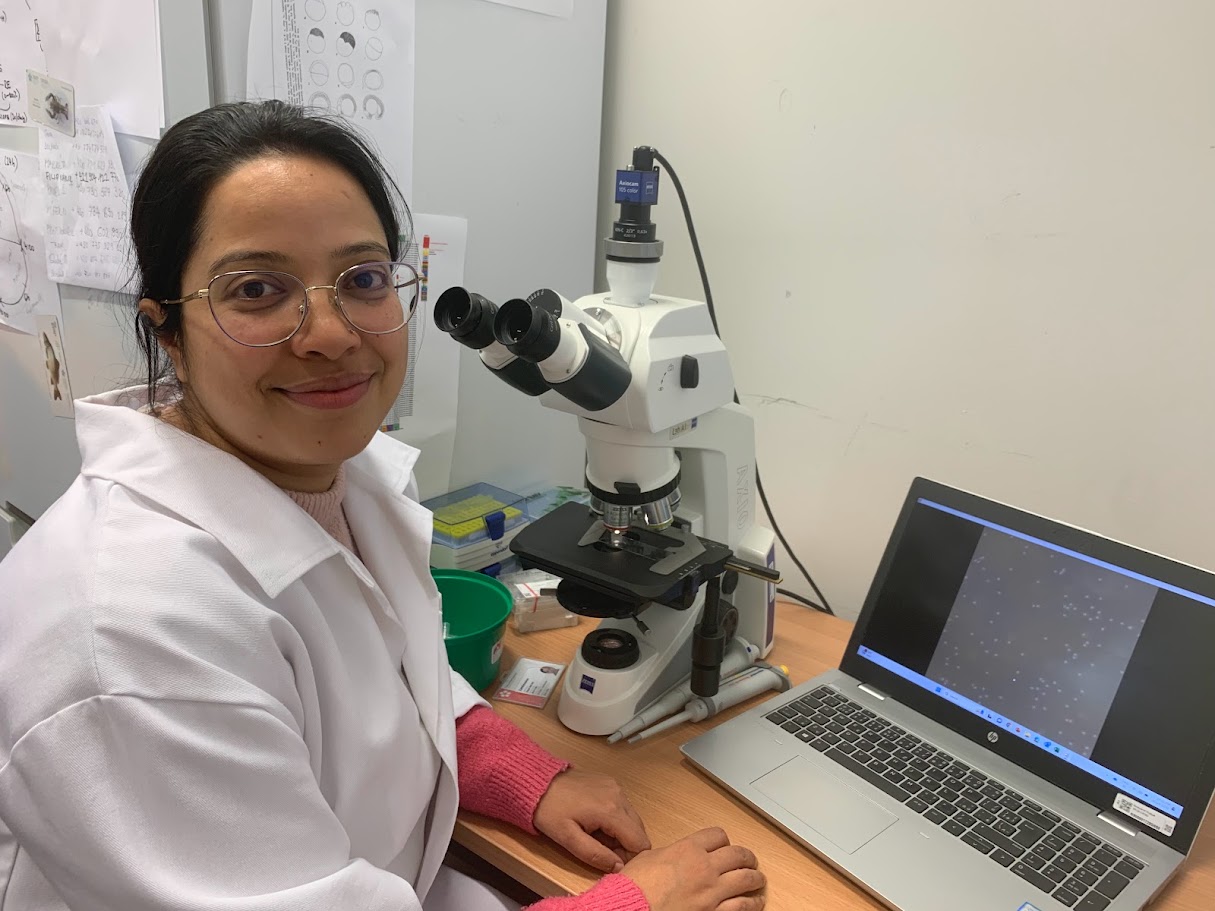
A newly published review article investigates the pivotal role of long-chain polyunsaturated fatty acids (LC-PUFAs) like arachidonic acid (ARA), eicosapentaenoic acid (EPA), and docosahexaenoic acid (DHA) in fish sperm. These fatty acids are more than structural components; they significantly influence sperm biomechanics and physiology, including motility, rheotaxis, and fertilization efficiency.
The study explores how LC-PUFA profiles in fish sperm are shaped by evolutionary pathways, dietary inputs, and biomechanical demands. It highlights the unique role of DHA in enhancing sperm functionality through its superior membrane fluidity, fusogenic properties, and resilience to biophysical stress. In addition, the role of ARA and EPA-derived eicosanoids in sperm inflammation and chemotaxis was revealed, suggesting an intricate balance between evolutionary adaptation and environmental influences.
The findings emphasize the need for careful consideration of dietary inputs in aquaculture, particularly for broodstock fish, to mitigate unintended impacts on sperm quality and downstream progeny fitness.
Detailed information can be found in the original review article: Rahi Roy, D., Roy, K., Panserata, S., Stejskal, V., Mráz, J., Turchini, G.M., 2024. Long chain polyunsaturated fatty acid (LC-PUFA) composition of fish sperm: nexus of dietary, evolutionary, and biomechanical drivers. Progress in Lipid Research 96, 101305. https://doi.org/10.1016/j.plipres.2024.101305
This review is a collaborative effort between the University of South Bohemia in České Budějovice, Faculty of Fisheries and Protection of Waters, Université de Pau et des Pays de L'Adour, and the University of Melbourne, bridging research across continents to provide new insights into fish reproduction in aquaculture practices.
Fig. 1: Microscopic monitoring of fish sperm motility.
Fig. 2: Sperm collection from crucian carp (Carassius carassius).
In recent decades, new knowledge and evidence have been collected about the negative effects of some substances of anthropogenic origin that enter the environment. These are mainly hormonally active substances that can disrupt the endocrine system of wild animals and humans. These substances have come to be collectively referred to as endocrine disruptors.
In the aquatic environment, most attention has so far been paid to substances with estrogenic effects, which have been shown to be involved in the increased occurrence of hermaphrodite fish or can even cause feminization of males. Relatively recently, it has been shown that some substances interact with progesterone receptors and can thus exhibit progestogenic or anti-progestogenic activity. Progesterone receptors mediate the action of natural gestagens (progestins) in the bodies of all vertebrates. Natural gestagens, such as progesterone, play an essential role especially in reproduction, but they also have other physiological functions. If substances with progestogenic or anti-progestogenic activity enter the aquatic environment, it can be assumed that they will negatively affect the development or fertility of fish that live in the affected localities. Progestogenic and anti-progestogenic activities have already been detected in wastewater and surface water in Europe, including the Czech Republic, in Australia, China and India. These activities were mainly detected using in vitro bioassays with the human progesterone receptor. However, there are quite large differences between the structure of human and fish progesterone receptors. Therefore, we sought to determine to what extent data on progestogenic and anti-progestogenic activities, obtained using in vitro bioassays with the human progesterone receptor, are relevant to fish.
For these purposes, we took samples of wastewaters and receiving surface waters. In these samples, we then measured the (anti-)progestogenic activity in parallel using an in vitro bioassay with the human progesterone receptor and a bioassay with the zebrafish progesterone receptor (which is a model fish species). The analyzes showed that the progesterone receptors of humans and zebrafish are activated or blocked differently by environmental samples. And it is a question whether the blocking or, on the contrary, the activation of the fish progesterone receptor is caused by other substances present in the waters than those to which the human progesterone receptor reacts. In any case, our tests have shown that the results obtained using in vitro bioassays with the human progesterone receptor cannot be used to estimate the potential risk of occurrence of (anti-)progestogenic activity in the aquatic environment for fish.
Kocour Kroupová, H., Grimaldi, M., Šauer, P., Bořík, A., Zálohová, K., Balaguer, P., 2023. Environmental water extracts differentially activate zebrafish and human nuclear progesterone receptors. Science of the Total Environment 859: 160232. doi.org/10.1016/j.scitotenv.2022.160232.
Napsala: Hana Kocour Kroupová
- Fotogalerie:
- Foto:
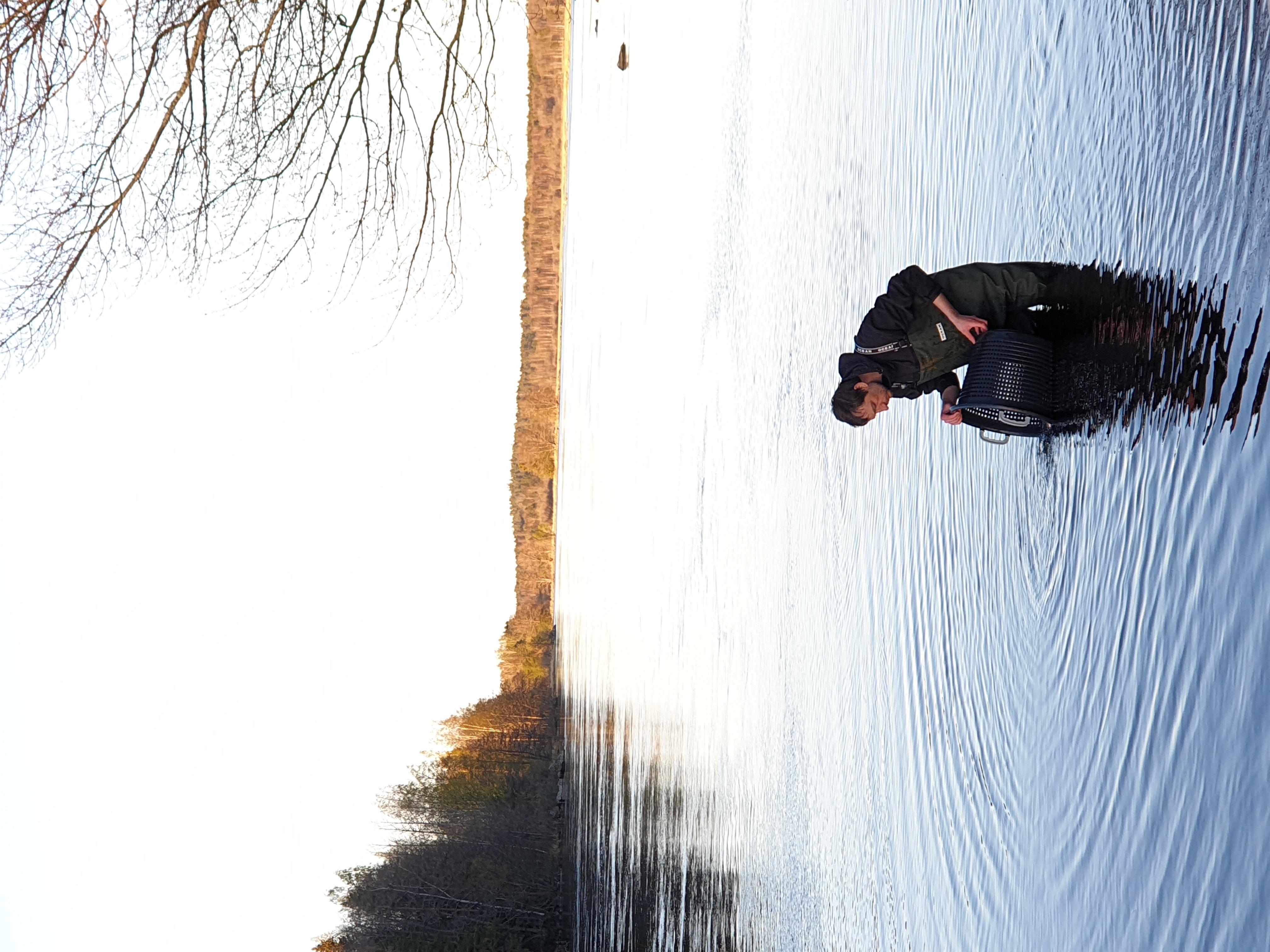
- Foto:
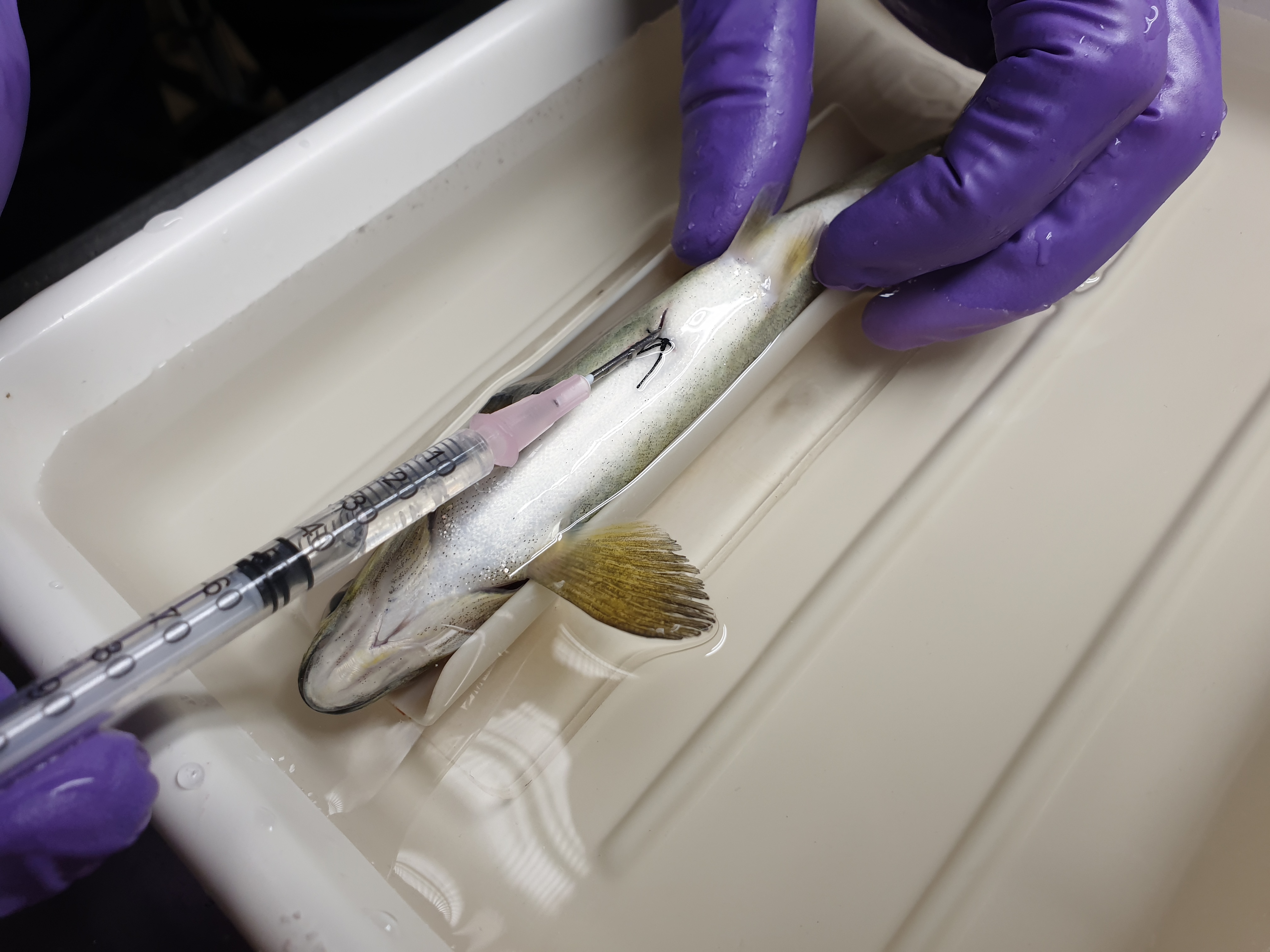
“Out of sight, out of mind” is how we often treat what is flushed down our toilets. But the drugs we take, from anxiety medications to antibiotics, don’t simply vanish after leaving our bodies. Many are not fully removed by wastewater treatment systems and end up in rivers, lakes and streams, where they can linger and affect wildlife in unexpected ways.
In the new international study published in Science journal, researchers investigated how psychoactive pharmaceuticals influence the migration of juvenile Atlantic salmon (Salmo salar). Successful seaward migration is the great challenge for the salmon smolts who spend their first two years in the upper stretches of the rivers. However, their chances to getting back for the reproduction after growing and maturing in the ocean is dependent on this very journey.
To study the migration of juvenile salmon in its natural habitat, fish were equipped with miniature transmitters allowing researchers to track their movement along the Swedish river Dalälven towards their ultimate goal – the Baltic Sea. Besides the transmitters, each fish also received an implant that slowly released studied pharmaceuticals in the fish body over the period of several weeks. The dose of the pharmaceuticals corresponded to concentrations that has been previously measured in aquatic organisms captured in the wild and therefore considered as “environmentally relevant”.
The results show that clobazam, a drug used to treat anxiety and epilepsy, among others, affected the natural behavior of juvenile salmon vital for their survival in the wild. The fish that received the clobazam implant had a higher chance to succeed in their river-to-sea migration compared with untreated fish, but they also participated less in shoaling. While an increase in migration success might initially sound like a positive effect, any disruption to natural behaviour is likely to be negative in the long term. The fact that clobazam exposed fish cared less about shoaling and migrated faster in the river is making them more vulnerable to predation from the bigger fish and fish eating birds that are plentiful in the area.
In any case, this unique study represents one of the first to describe the effects of pharmaceuticals on fish behavior in their natural habitat as until now, only laboratory based studies were performed.
A detailed information could be found in the original article:
Brand, J.A., Michelangeli, M., Shry, S.J., Moore, E.R., Bose, A.P.H, Cerveny, D., Martin, J.M., Hellström, G., McCallum, E.S., Holmgren, A., Thoré, E.S.J., Fick, J., Brodin, T., Bertram, M.G., 2025. Pharmaceutical pollution influences river-to-sea migration in Atlantic salmon (Salmo salar). Science 388 (6743), 217—222. https://doi.org/10.1126/science.adp7174
The publicly accessible simplified version can be found here.
Intro. fig. 1. Two years old Atlantic salmon (smolt) ready for release.
Fig. 2. Release of experimental smolts into the Swedish river Dalälven.
Fig. 3. Application of the implant containing studied pharmaceuticals.
Written by: Daniel Červený
Photo by: Michael Bertram
- Fotogalerie:
- Foto:
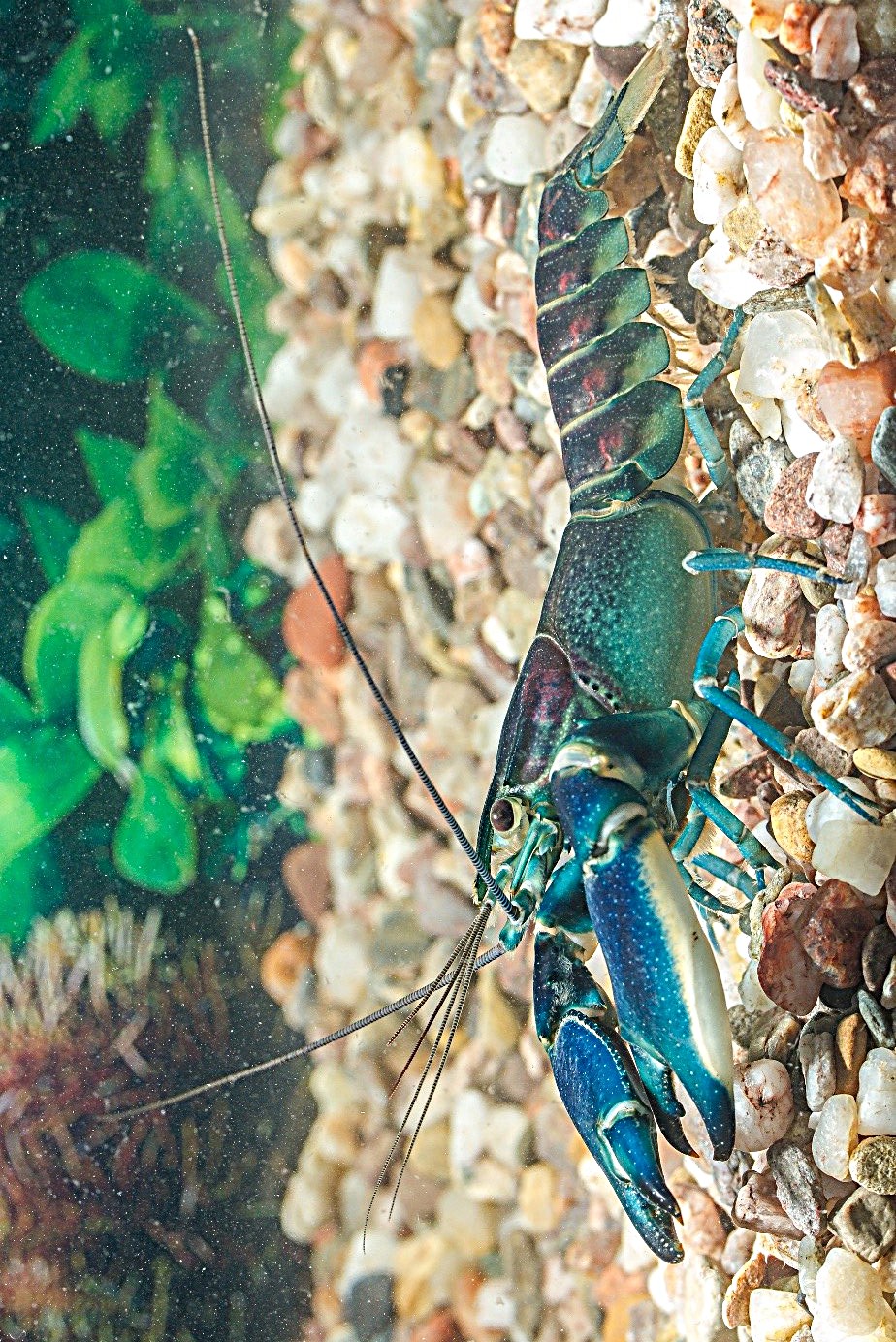 , Text k fotce:
A male of newly described dusty crayfish Cherax pulverulentus.
, Text k fotce:
A male of newly described dusty crayfish Cherax pulverulentus. - Foto:
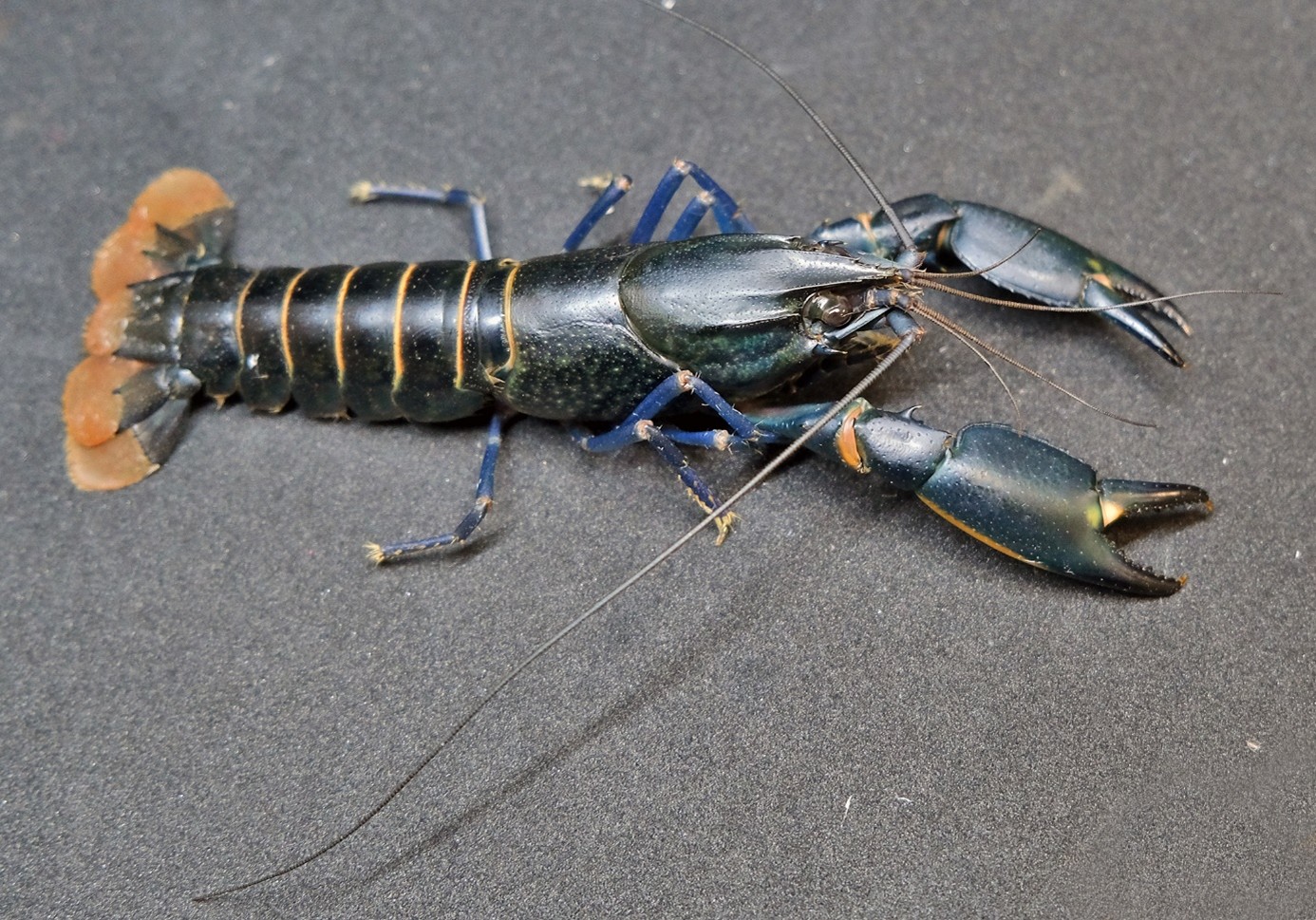 , Text k fotce:
Samice nově popsaného raka zaprášeného Cherax pulverulentus.
, Text k fotce:
Samice nově popsaného raka zaprášeného Cherax pulverulentus. - Foto:
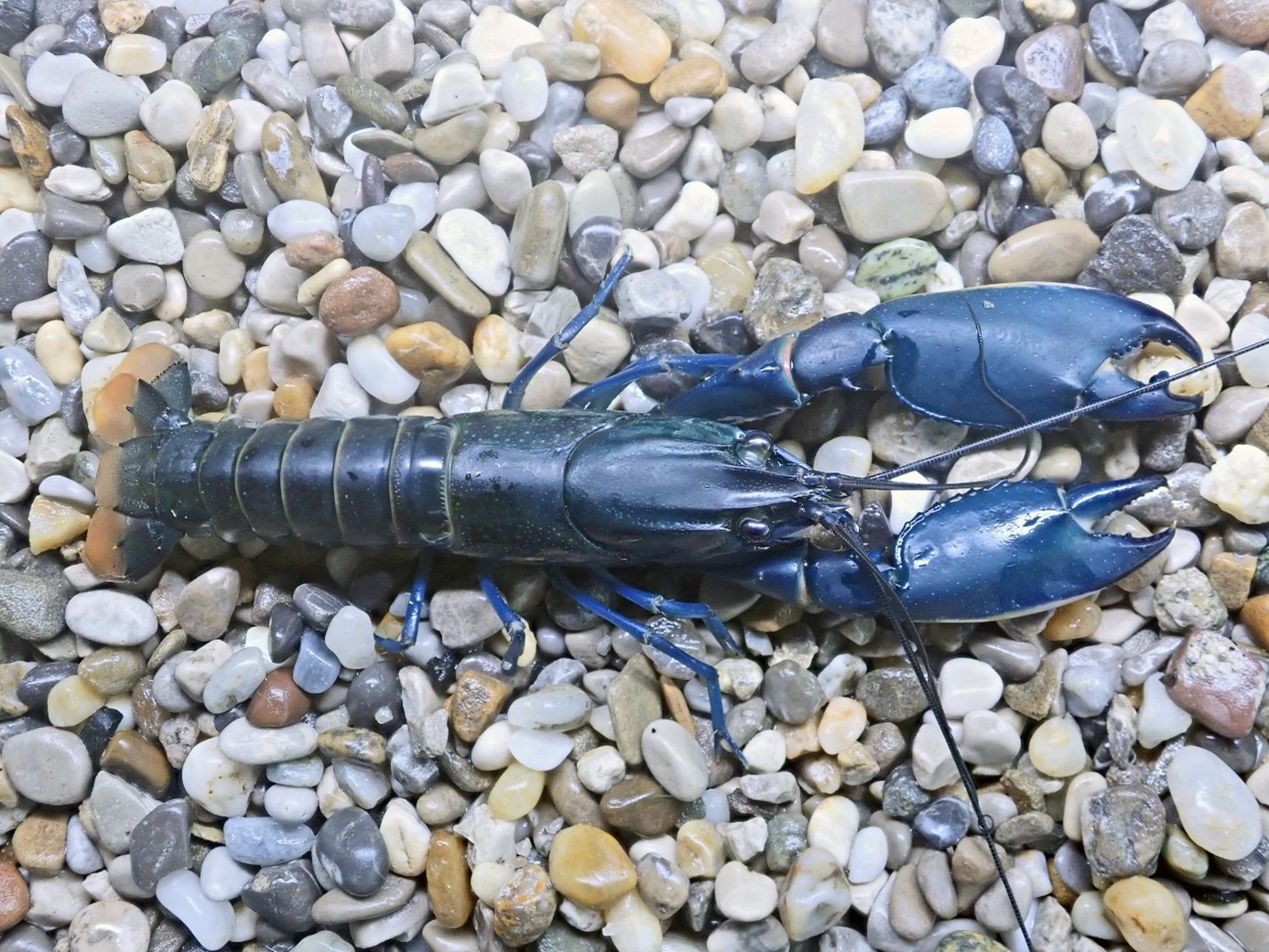 , Text k fotce:
A male of newly described dusty crayfish Cherax pulverulentus captured at a thermal spring in Hungary.
, Text k fotce:
A male of newly described dusty crayfish Cherax pulverulentus captured at a thermal spring in Hungary.
A long-term, vivid collaboration between Jiří Patoka from the Faculty of Agrobiology, Food and Natural Resources, Czech University of Life Sciences Prague, and Martin Bláha and Antonín Kouba from the Faculty of Fisheries and Protection of Waters, University of South Bohemia in České Budějovice yielded a further description of a new crayfish species. The newly described dusty crayfish Cherax pulverulentus is endemic to the streams west of the Ayamaru Lake in Papua Province, Indonesia. It features distinct color morphs and possesses a unique morphology and genetics supporting its species status.
Many attractively colored crayfish species endemic to this region are often field-captured and subsequently exported by Indonesian wholesalers to pet markets, especially in Europe, the USA, and Japan. For instance, the dusty cray has been traded at the aquarium market for more than 20 years as “Blue Moon” or “Irian Jaya” crayfish. Formal scientific descriptions of new species are crucial for the proper management of pet-traded crayfish in their native range, given their catches remain unregulated, threatening their restricted populations. It also appears that they can be kept irresponsibly, as evidenced by a dumped individual captured at a thermal locality in Hungary and in our previous research (Bláha et al., 2022).
Detailed information can be found in the original article:
Patoka, J., Akmal, S.G., Bláha, M., Kouba, A., 2025. Cherax pulverulentus, a new freshwater crayfish (Decapoda: Parastacidae) from Southwest Papua Province, Indonesia. Zootaxa 5566: 522–534. https://mapress.com/zt/article/view/zootaxa.5566.3.4
An international team, led by our colleague Phillip J. Haubrock, has examined the costs caused by invasive species in Europe. In their study, published last week in the specialist Journal “NeoBiota”, they showed that in the period from 1960 to 2020, damage of more than 116.61 billion euros was caused by non-native species in European countries. According to the researchers, expenditure has increased tenfold every decade – and the real costs are probably many times higher.
Detailed information can be found in the original article: Haubrock et al., 2021. Economic costs of invasive alien species across Europe. NeoBiota 67: 153–190.
Distribution of invasive species costs in Europe by a)type of cost and b)impacted sector.
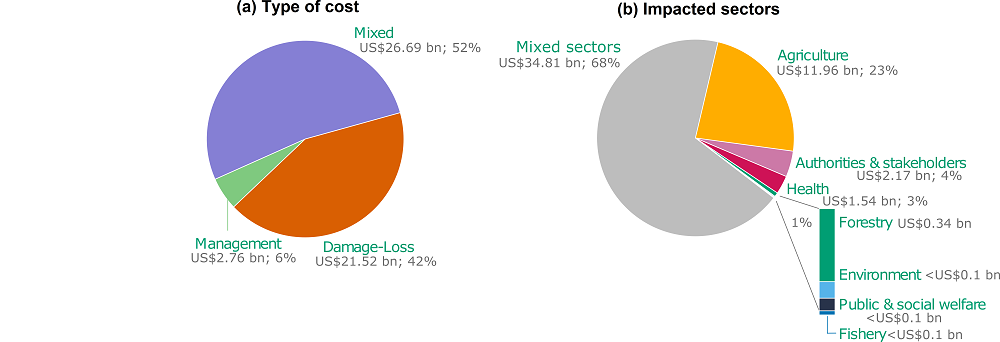
Despite voluminous literature identifying the impacts of invasive species of organisms, summaries of their monetary costs remain often limited for many taxonomic groups. Invasive aquatic crustaceans are such a case. Using the InvaCost database, we quantified and analysed reported costs associated with this animal group. Invasive crayfish caused US$ 120.5 million in reported costs just in 2000–2020. These costs were unevenly distributed across countries, with a strong bias towards European economies (US$ 116.4 million; mainly due to the signal crayfish in Sweden), followed by costs reported from North America and Asia. The costs of invasive crayfish have increased considerably over the past two decades, averaging US$ 5.7 million per year. Invasive crabs have caused costs of US$ 150.2 million since 1960 (57% in North America and 42% in Europe). Damage-related costs dominated both crayfish (80%) and crabs (99%), with management costs often very low. Reported costs for invasive amphipods (US$ 178.8 thousand) and lobsters (US$ 44.6 thousand) were considerably lower.
Overall, these costs remain vastly underestimated considering the gaps in reporting at taxonomic (already recognised invasive species with no reported costs), geographic (widely invaded regions without costs), and temporal scales (most of the costs occurring in the 21st century despite often longer introduction histories). Therefore, better reporting is needed to assess better the true magnitude of monetary costs caused by invasive aquatic crustaceans.
Detailed information can be found in the original article: Kouba, A., Oficialdegui, F.J., Cuthbert, R.N., Kourantidou, M., South, J., Tricarico, E., Gozlan, R.E., Courchamp, F., Haubrock, P.J., 2022. Identifying economic costs and knowledge gaps of invasive aquatic crustaceans. Science of the Total Environment 813: 152325.
Written by: doc. Ing. Antonín Kouba, Ph.D.
Navzdory rozsáhlým znalostem o dopadech různých skupin invazních druhů organizmů zůstává poznání jejich ekonomických škod velmi omezené. Takovou skupinou jsou i invazní vodní korýši. Pomocí databáze InvaCost jsme analyzovali doposud vykázané ekonomické náklady spojené s touto živočišnou skupinou. Pouze v letech 2000–2020 měli invazní raci na svědomí škody ve výši 120,5 milionu amerických dolarů (USD). Tyto náklady byly nerovnoměrně rozloženy se silným sklonem k evropským ekonomikám (116,4 mil. USD, především kvůli raku signálnímu ve Švédsku), následovanými Severní Amerikou a Asií. Náklady invazních raků za poslední dvě desetiletí značně vzrostly, v průměru se jednalo o 5,7 mil. USD ročně. Invazní krabi způsobili od roku 1960 náklady ve výši 150,2 mil. USD (57 % v Severní Americe a 42 % v Evropě). Převládaly především přímé škody způsobené těmito druhy (80 % nákladů hlášených u raků a 99 % u krabů). Naopak náklady na jejich management byly podstatně nižší. Vykázané náklady v případě invazních různonožců (konkrétně blešivců; 178,8 tis. USD) a humrů (44,6 tis. USD) byly výrazně menší.
Z důvodu nedostatečného vykazování však zůstávají zmiňované ekonomické náklady významnou měrou podhodnoceny. Důvody jsou mimo jiné taxonomické, geografické a časové. Pro řadu dobře známých invazních druhů totiž nejsou reportovány žádné náklady. Rovněž existují rozsáhlé regiony či dokonce kontinenty se známým výskytem invazních raků bez hlášených ekonomických škod a navzdory podstatně delší historii výskytu v nově osídlených oblastech jsou náklady invazních vodních korýšů hlášeny především v posledních dvou desetiletích. Pro posouzení skutečných ekonomických nákladů invazních vodních korýšů je proto nezbytné posílit aktivity vedoucí ke kvantifikaci a nahlašování takovýchto škod.
Podrobné informace jsou dostupné v původním článku: Kouba, A., Oficialdegui, F.J., Cuthbert, R.N., Kourantidou, M., South, J., Tricarico, E., Gozlan, R.E., Courchamp, F., Haubrock, P.J., 2022. Identifying economic costs and knowledge gaps of invasive aquatic crustaceans. Science of the Total Environment 813: 152325.
Napsal: doc. Ing. Antonín Kouba, Ph.D.
Mezinárodní tým vedený naším kolegou Phillipem J. Haubrockem zkoumal náklady spojené s invazivními druhy vyskytujícími se v Evropě. Ve své studii publikované minulý týden v odborném časopise „NeoBiota“ ukazuje, že v letech 1960 až 2020 si nepůvodní druhy v evropských zemích vyžádaly náklady ve výši více než 116,61 miliardy eur. Podle vědců se výdaje každých deset let zvýšily desetkrát a upozorňují, že skutečné náklady jsou pravděpodobně mnohonásobně vyšší.
Podrobné informace lze nalézt v původním článku: Haubrock et al., 2021. Economic costs of invasive alien species across Europe. NeoBiota 67: 153–190.
Distribuce nákladů způsobených invazivními druhy v Evropě podle a) typu nákladů a b) poškozeného sektoru.

- Fotogalerie:
- Foto:

Invazní druhy vodních organizmů jsou velkou hrozbou nejen pro společenstva původních druhů a jejich ekosystémy, ale způsobují i rozsáhlé ekonomické škody. Jedním z faktorů usnadňujících jejich šíření je výstavba vnitrozemských kanálů a průplavů, které propojují dříve izolovaná moře. V našem článku jsme díky databázi InvaCost jako první kvantifikovali ekonomické škody invazních druhů šířících se s přispěním hlavních evropských vnitrozemských kanálů, popř. Suezského a Panamského průplavu.
Navzdory vysokému počtu známých invazních druhů v daných regionech byly prozatím pouze u pěti z nich zdokumentovány i ekonomické škody. Jedná se o perloočku Cercopagis pengoi a slávičku mnohotvárnou Dreissena polymorpha v evropských vodách a čtverzubce stříbropásého Lagocephalus sceleratus, perutýna ďábelského Pterois miles a medúzu Rhopilema nomadica v případě Suezu. Pro tyto druhy byly celkově zdokumentované náklady vyšší než 42,2 milionu milionu amerických dolarů (33,6 milionu pro evropské vnitrozemské kanály a 8,6 milionu pro Suez, zatímco v případě Panamského průplavu nebyly doposud hlášeny žádné škody). Vzhledem k vysokému počtu ekologicky problematických invazních druhů šířících se v těchto oblastech je zřejmé, že jejich socioekonomické dopady zůstávají téměř zcela nepodchyceny.
Podrobné informace jsou dostupné v původním článku: Balzani, P., Cuthbert, R. N., Briski, E., Galil, B., Castellanos-Galindo, G.A., Kouba, A., Kourantidou, M., Leung, B., Soto, I., Haubrock, P.J., 2022. Knowledge needs in economic costs of invasive species facilitated by canalisation. NeoBiota 78: 207–223. https://doi.org/10.3897/neobiota.78.95050.
Napsal: Paride Balzani, Ph.D.
Zdroj úvodní foto: EVER_GIVEN_(49643352087).jpg (2934×1640) (wikimedia.org)
Vertebrates are characterized by formation of outer surface by a sheath of cells called ectoderm, while the inner lining of the primitive gut is made from endoderm. These two layers get together in the anterior part of digestive tract, so called farynx. The team of Rober Černý with Martin Minařík as the first author (Charles University in Prague, Faculty of Science, Czech Republic) came with findings, which rewrite the present opinions of developmental and evolutionary biology. The basal ray-finned fishes such as bichirs, gars and sturgeons, sometimes considered living fossils, have a facial part of head composed of endodermal cells of a pre-oral part of the gut, which is very archaic characteristic expected only in ancestors of vertebrates.
Our Faculty of Fisheries and Protection of Waters supplemented the study with a representative of sturgeons and with two co-author positions (Martin Pšenička and David Gela) and two other colleagues mentioned in acknowledgement (Marek Rodina and Martin Kahanec) became inscribed in the prestigious journal Nature.
For more info see a press release here: https://www.natur.cuni.cz/fakulta/aktuality/stara-tajemstvi-nove-hlavy-obratlovcu or the manuscript on the official web page of Nature: http://www.nature.com/nature/journal/v547/n7662/full/nature23008.html, or a publicly accessible view-only version: http://rdcu.be/tXoa
TV interview on ČT24 starts at 15:34 minute:
http://www.ceskatelevize.cz/ivysilani/10101491767-studio-ct24/217411058290719
Full reference: Minarik, M., Stundl, J., Fabian, P., Jandzik, D., Metscher, B.D., Psenicka, M., Gela, D., Osorio-Pérez, A., Arias-Rodriguez, L., Horácek, I., Cerny, R. Pre-oral gut contributes to facial structures in non-teleost fishes. Nature, 547: 209-212. doi:10.1038/nature23008 (IF=40.137)
-----------------------------------------------------------------------------------------
Picture legend: SEM images of sturgeon head with endodermal contribution pseudocoloured yellow. Antero-ventral views, 10 days post hatching; mb, medial barbel; lb, lateral barbel; ao, ampullary organs; rb, rostrum; llo, lateral line organs; ll, lower lip.


















